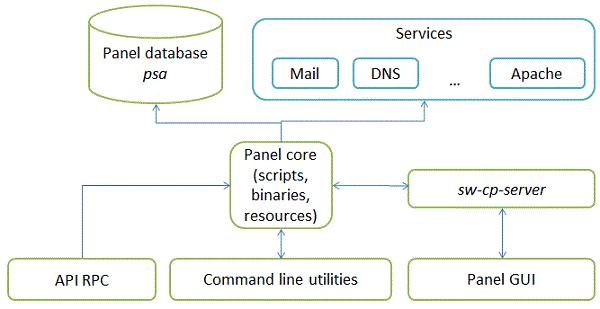

- #PLESK 12.5 INSTALL#
- #PLESK 12.5 UPGRADE#
Upgrade to the next testing release is available only to the owners of a testing build. Learn more in the Deployment Guide, in the chapter Installing Plesk.Ģ.
#PLESK 12.5 INSTALL#
You can install the testing Plesk version only by running Plesk Installer with one of the special options. By default, testing builds are not shown as available for installation. To indicate the stage of the current Plesk version, we assign one of the following release tiers to it: Testing release, Early Adopter release, General release, and Late Adopter release.ġ. The functionality of such features in subsequent Plesk versions is improved as they receive more customer feedback over time. It is natural that in earlier stages, some newly implemented features may not be in their final state and may require some further modification. from 10.3.1 to 10.4.0).ĭuring its lifecycle, each major Plesk version passes through a number of development stages (see the diagram below).

If an upgrade includes more complex changes in Plesk, then the major version number is incremented (e.g.
 Typically, if an upgrade only improves the existing functionality, then Plesk increments its minor version number (e.g. After an upgrade, Plesk increases its major or minor version: GET-DOMAIN-LIST retrieves information about all the reseller's domains.Upgrades always bring a significant number of Plesk enhancements or even introduce new Plesk features and behavior. DISABLE-APS-FILTER includes all available apps in the specified reseller account. ENABLE-APS-FILTER excludes all apps from the specified reseller account. REMOVE-PACKAGE excludes an app from the specified reseller account. ADD-PACKAGE includes an app in the specified reseller account. SYNC-SUBSCRIPTION operation rolls reseller account settings back to the values defined in an associated reseller plan. SWITCH-SUBSCRIPTION operation changes a reseller plan for a reseller account. CONVERT-TO-CUSTOMER converts a reseller account into a customer account. GET-PERMISSION-DESCRIPTOR retrieves reseller permission descriptor. GET-LIMIT-DESCRIPTOR retrieves reseller limit descriptor. CFORM-BUTTONS-LIST displays a buttons list for a reseller's home page. IPPOOL-SET-IP changes type of IP addresses (shared/exclusive) in a reseller's IP pool. IPPOOL-DEL-IP removes IP addresses from a reseller's IP pool. IPPOOL-ADD-IP adds IP addresses to a reseller's IP pool. GET retrieves information on reseller accounts. Limits on Plesk resources usage, and limits usage policy. Summing up, a reseller account presents a set of reseller personal data and a collection of various settings. To learn more about reseller plans, refer to the Managing Reseller Plans section. A reseller account can be created with a unique collection of settings, or this can be done using a reseller plan that holds a collection of predefined settings. Once created, a reseller account is allotted a portion of Plesk server resources. All reseller accounts are managed by the Administrator. Resellers are the Plesk users who own and manage customer accounts. Plesk user: Plesk Administrator, Plesk reseller Plesk version: Plesk 9.0 and later for Windows, Plesk 9.0 and later for Linux Go to documentation for the latest version, Plesk Obsidian.
Typically, if an upgrade only improves the existing functionality, then Plesk increments its minor version number (e.g. After an upgrade, Plesk increases its major or minor version: GET-DOMAIN-LIST retrieves information about all the reseller's domains.Upgrades always bring a significant number of Plesk enhancements or even introduce new Plesk features and behavior. DISABLE-APS-FILTER includes all available apps in the specified reseller account. ENABLE-APS-FILTER excludes all apps from the specified reseller account. REMOVE-PACKAGE excludes an app from the specified reseller account. ADD-PACKAGE includes an app in the specified reseller account. SYNC-SUBSCRIPTION operation rolls reseller account settings back to the values defined in an associated reseller plan. SWITCH-SUBSCRIPTION operation changes a reseller plan for a reseller account. CONVERT-TO-CUSTOMER converts a reseller account into a customer account. GET-PERMISSION-DESCRIPTOR retrieves reseller permission descriptor. GET-LIMIT-DESCRIPTOR retrieves reseller limit descriptor. CFORM-BUTTONS-LIST displays a buttons list for a reseller's home page. IPPOOL-SET-IP changes type of IP addresses (shared/exclusive) in a reseller's IP pool. IPPOOL-DEL-IP removes IP addresses from a reseller's IP pool. IPPOOL-ADD-IP adds IP addresses to a reseller's IP pool. GET retrieves information on reseller accounts. Limits on Plesk resources usage, and limits usage policy. Summing up, a reseller account presents a set of reseller personal data and a collection of various settings. To learn more about reseller plans, refer to the Managing Reseller Plans section. A reseller account can be created with a unique collection of settings, or this can be done using a reseller plan that holds a collection of predefined settings. Once created, a reseller account is allotted a portion of Plesk server resources. All reseller accounts are managed by the Administrator. Resellers are the Plesk users who own and manage customer accounts. Plesk user: Plesk Administrator, Plesk reseller Plesk version: Plesk 9.0 and later for Windows, Plesk 9.0 and later for Linux Go to documentation for the latest version, Plesk Obsidian.







 0 kommentar(er)
0 kommentar(er)
